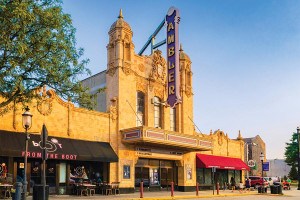Good News for Philly Starter Home Buyers

The latest data from Zillow show rising inventory with only modest price gains, which is great news for those just getting started as homeowners.
According to the latest national figures from Zillow, things are getting tougher for first-time home buyers across the country: inventories of homes for sale are falling and prices are heading upward.
At least on the inventory front, that’s not the case in Philadelphia.
Zillow’s April Market Report shows that while the inventory of homes for sale in the bottom third of the real estate market is down 7.8 percent from year-ago levels nationwide, inventory of entry-level homes in Philadelphia increased by 2.3 percent in the same period.
House values overall as measured by the Zillow Home Value Index rose by 3.1 percent in the Philadelphia metro market from April 2015 levels, well below the 4.1 percent nationwide rise. Broken down by tiers, prices rose the least at the top of the market, up 2.2 percent; the price rise at the bottom was 2.6 percent, and prices in the middle rose the most, 3.1 percent.
Philadelphia remains the most affordable of the large Northeastern metros according to Zillow data. According to Aaron Terrazas, a senior economist at Zillow, “even Baltimore is substantially more expensive than Philadelphia. When you look at the median house value per square foot, it’s $130 in Philadelphia, while in Baltimore, it’s $167. Philadelphia is more like Chicago or Phoenix, which have similar values per square foot.”
It’s also reasonably affordable by national standards. Terrazas cited Zillow data that show that on average, Philadelphians spend 29.2 percent of their household income on rent and 14.5 percent on mortgage payments. “That’s a hair below national figures,” he said. Rising house prices are sending those percentages upward locally, “but it’s still within a reasonable range.” By comparison, the average New Yorker shells out 41.1 percent of their income to the landlord and 25 percent to the mortgage lender, “much worse than Philly,” he continued.
One reason why house prices are rising more slowly in Philadelphia than elsewhere is slow income growth relative to other large East Coast markets. “Incomes rose 1.6 percent [from this time last year] in Philadelphia, compared with 2.4 percent in DC, 2.2 percent in Boston and 1.9 percent in New York, so that puts a cap on what people can afford,” said Terrazas.
Another statistic that sets this market apart from its East Coast peers is this: Homes remain cheaper per square foot in the city than in the suburbs. “You don’t see that in Washington, New York or Boston,” he said. In Washington, for instance, the city has shot past its suburbs in the years since the housing market bubble burst.
The bottom line, Terrazas concluded, remains: “Relatively cheap homes compared to other places is why Philadelphia looks good compared to its neighbors.”
Follow Sandy Smith on Twitter.


